All charged up Installing EV chargers Pg. 10
Creative Eye A photovoltaic project Pg. 20
Ryan Report Inflation worries Pg. 18
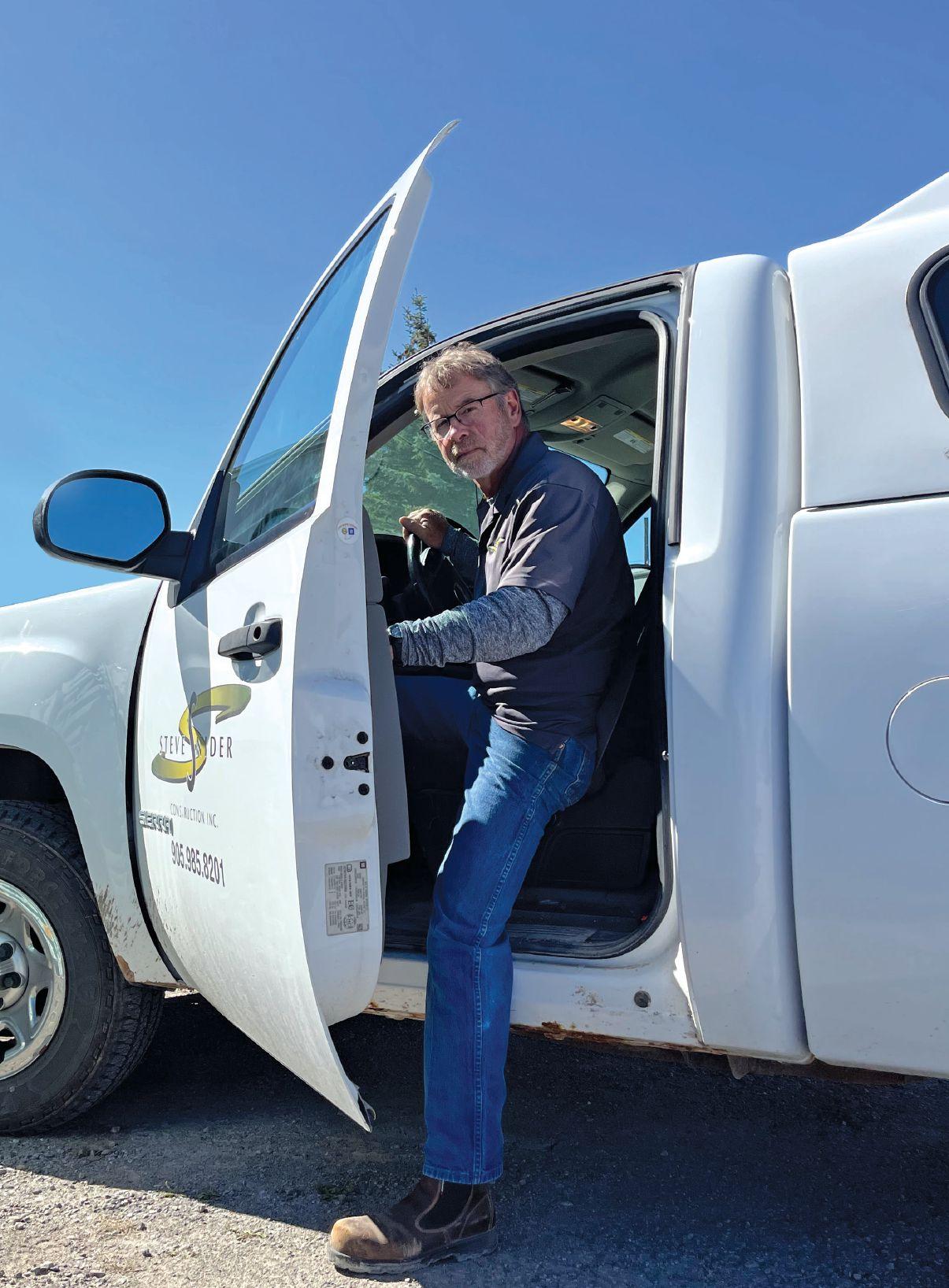

All charged up Installing EV chargers Pg. 10
Creative Eye A photovoltaic project Pg. 20
Ryan Report Inflation worries Pg. 18

Stephen Snider is giving homes the complete eco overheaul Page 10

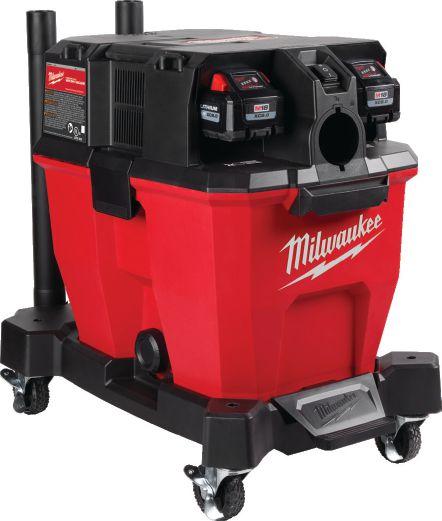
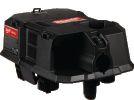

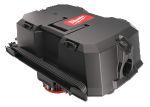

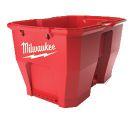



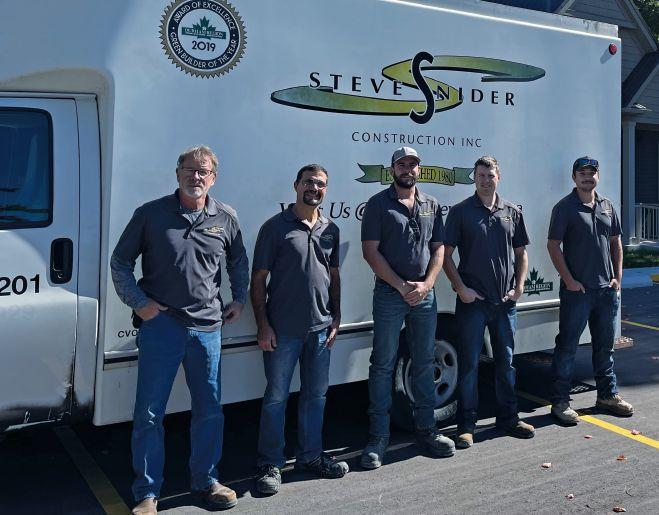

Whether you like to read, listen or watch, Canadian Contractor has you covered.




Flip through the digital versions of your favourite past issues of Canadian Contractor. All available in the digital edition archives at canadiancontractor.ca.
The feds are offering $547.5 million of funding to purchase or lease zero-emission vehicles. Bonny Koabel of AKR Consulting joins The Hammer to explain how to access some of that cash for your business.
Making sure windows and doors meet fire codes is critical for any builder. An expert team from Jeld-Wen shows us how in this sponsored video.
Pretty pictures and exciting news. We like to celebrate the contractor community from sea to shining sea. Follow us on LinkedIn, Twitter, Facebook and Instagram for news on your community.
(416) 510-5113 Fax: (416) 510-6875 Email: apotal@annexbusinessmedia.com Mail: 111 Gordon Baker Rd., Suite 400, Toronto, ON M2H 3R1
Editor Patrick Flannery pflannery@annexbusinessmedia.com
ISSN 1498-8941 (Print)
Associate Editor Daniel Reale-Chin dreale-chin@annexbusinessmedia.com
Brand Sales Manager Nav Matharu (226) 931-5095 nmatharu@annexbusinessmedia.com

Account Coordinator Barb Comer bcomer@annexbusinessmedia.com
Audience Development Manager Beata Olechnowicz bolechnowicz@annexbusinessmedia.com
Media Designer Lisa Zambri
Group Publisher Danielle Labrie (226) 931-0375 dlabrie@annexbusinessmedia.com
COO Scott Jamieson sjamieson@annexbusinessmedia.com



A S I M P L E , F O O D S A F E S E A L F O R Y O U R
T I L E , S T O N E & M A S O N R Y S U R F A C E S






Don’t just have power, deserve it.
It has probably not escaped your notice that Queen Elizabeth passed away this September. The articles about her life have been a window into a truly remarkable track record of long-term success as a public figure. I think Rex Murphy put his finger on it in the National Post when he said that it was her commitment to duty and dignity, rather than celebrity, that allowed her to endure and leave this world with almost universal respect and affection.
That she and the monarchy attract such attention always seems weird when you understand that they have no real power over anything, anywhere. Their activities should be irrelevant clickbait on par with Kim Kardashian’s latest exploit. Yet, somehow, it doesn’t feel entirely like that. I see the adoring crowds outside Buckingham Palace and the earnest seriousness of whatever ceremony or event they are participating in and think, “Something important is going on here.”
The question that’s been bugging me lately is, “What is it?”
I may have arrived at an answer that satisfies me, at least. Having power in society is easily understood. It means you can have others do what you tell them. That’s accomplished by having money; or by having the law and courts on your side; or having people with guns who will do your bidding; or some combination of all these things. Our politicians get elected, which gives them the legal right to make budgets and laws and tell law enforcement and the military what to do. That’s real power – the kind the monarchy utterly lacks and has lacked for some time since before the Queen was even born.
” Spare a thought for how you communicate that you not only have power, but deserve to have power. Be able to answer the question: why should anyone pay attention to you?
By Patrick Flannery Editor ”
Having power is one thing. But getting others to accept someone’s power over them is quite another. If you have to pull the gun out and wave it around every time you issue an order, things will not run very smoothly. Somehow, people must be convinced that your power is legitimate, and that you don’t just have it...you deserve it.
That, in my view, is the role the monarchy has played in British and Commonwealth constitutional democracies for at least the last century. Just by existing and retaining its ceremonial role as the ultimate authority, it connects the country and whatever government it has today to 1,000 years of history and tradition. That makes it harder for anyone to feel that their leaders are governing arbitrarily and are really nothing more than a pack of rogues who have managed to win an election. We accept that they have the right to rule over us.
How was the Queen able to do this? Easy...she didn’t have to really lead anything. She never had to be responsible for anything that actually mattered. All she had to do was stay in character in public, which she did – unfailingly, unflinchingly, rocklike – for 70 years. I don’t think any monarch before or any following will be able to do so as well.
My publisher tells me I’m supposed to connect these editorials to the industry somehow, so here goes. In light of the death of Her Majesty, spare a thought for how, in your business, you communicate that you not only have power, but deserve to have power. Be able to answer the question: why should anyone pay any attention to you? Yes, you can fire them, but would they follow you even if you couldn’t? The Queen couldn’t do anything to anyone outside her immediate employ, yet got millions around the world to follow her, voluntarily. There has to be a lesson in leadership there. And God save the King. cc
Police in Peel Region, Ont., arrested a Mississauga man for fraud charges in August. According to a report by Peel Police, the man was arrested and charged for alleged contractor fraud that spanned over two years between 2020 to 2022 in multiple cities in the Greater Toronto Area. The man was arrested on Aug. 22, after Peel Police said they received several fraud reports involving Milentje Djordjevic. According to the police, the suspect promised contractor home services and was paid deposits and used sub-contractors. Several victims have come forward and

stated that services had never even begun. Police are estimating the fraud to be worth over $1,000,000. Djordjevic will appear at the Ontario Court of Justice at a later date to face trial for defraud the public charges and four counts of fraud over $5,000.
In a news release, a Peel police spokesperson urged all members of the public “to consider not prepaying for products or services when dealing with unknown or unproven individuals. Check references and establish a contract and payment schedule for services rendered.” cc
The government of Canada is investing $25 million for apprenticeship training, training equipment and partnerships in the Red Seal trades across Canada. The investment will be provided through the Union Training and Innovation program. Carla Qulatrough, the Canadian Minister of Employment, Workforce Development and Disability Inclusion, announced a call for proposals to the program in August. The call is for Stream 1 of the program, which supports the purchase of equipment and materials needed to train workers in the Red Seal trades. Ottawa is investing up to $10 million between 2022 to 2023 for this stream of the program and will provide unions with up to 50 percent of the cost of new training equipment and materials for specific projects. According to the government’s website, the budget for 2022 doubled funding for the UTIP with an $84.2 million investment over four years. The program also aims to get diverse groups involved in the skilled trades including women, Indigenous people, newcomers, persons with disabilities and visible minorities.
“Canada needs more skilled trades workers, and union training programs are critical to this mission. That’s why we’re investing in centres across the country that will help train the next generation of welders, carpenters, electricians and other skilled workers in the Red Seal trades,” said Qualtrough.
Several provinces across Canada announced similar programs in the past few months. The government of Ontario is investing $90 million in new funding to help workers find new skills. Labour minister Monte McNaughton announced the new round of funding for the Skills Development Fund in September. According to a Sept. 26 news report from the province’s website, the fund will support innovative training projects that give skills to workers and those looking for jobs. The BC Construction Association is also offering up to $40,000 to construction employers in British Columbia. The funding will help offset the costs of onboarding and training first-year apprentices in 39 Red Seal trades. Employers will receive $5,000 for hiring or registering any new first-year apprentice in one of the Red Seal trades, plus an additional $5,000 if the worker self-reports as a woman, new Canadian, LGBTQ, Indigenous, a person with a disability or a visible minority. cc
The government of Alberta has created the Premier’s Council on Skills to strengthen post-secondary programming in line with current and future industry demand. The council will be composed of 11 industry stakeholders working through the Ministry of Advanced Education.
“Our government is obsessed with attracting new investment to fuel our economy’s diversification. We need skilled workers to fill the high-wage jobs that are being created in record numbers in Alberta. This council will help us to rise to the challenge in developing and retaining these skilled workers,” Alberta premier Jason Kenney said in a statement.
Creation of the council was a recommendation of the Skills for Jobs Task Force and will act as a key liaison between industry and government on skills development and will provide critical industry input to inform government policies, a release said. A full list of council members is available at the government of Alberta’s website. cc
Last month’s Dilemma featuring Vince, the contractor struggling with his commitment to training apprentices, touched a nerve with many of you. Here are some of the outstanding responses we received – find our winner on page 30.
Matthieu Bazinet from MBHE offered Vince a heartfelt solution:
I recommend sticking with your values. When it’s a trend you can follow the wave, but when it touches your core values you should stick to your ground. All the issues could be resolved through planning, organizing and adapting to the upcoming obstacles. I believe the benefits will be much higher than the cost in time, energy and brainstorming new ideas. You get qualified workers that can deliver quality while respecting your project timeline. You also minimize the risks for lawsuits, future problems and client complaints. Vince, follow your core values in this dilemma.
Susan Franco considers the system broken, and told us what needs to be fixed:
The construction system in general is not working for employers and apprenticeships in the trades. We need more employers/trainers willing to assist the new generation in order that the construction field is adequately employed for future years. More communication is required between employers, government officials (who are experts in the construction field), and apprenticeships. Currently the system is not working and this requires someone with knowledge and expertise in this field and what is required in order to have these groups of individuals working better together. For example, hiring an ex-trades person and an assistant in coordinating, informing, schooling/reporting, and dealing with unions in order that these individuals stay in the trades. When individuals have a helping hand or designated person to assist, it makes the process smoother and easier so that both the employer and apprentice can manage all the red tape. We all know that trades require more individuals in the field in the next century, therefore working together and communication is the best tool.
Jex Bailey from J. Bailey & Sons commends Vince for his efforts to make the community stronger: First of all, the fact that Vince’s apprentices move on to go into business for themselves attests to the fact he is doing something right in building strong, intelligent and worthy Red Seal journeyman carpenters. Vince notes that the trained staff “stand out with better quality, less wasted time and a professional approach that pleases clients.” Since his trained apprentices give his clients a better view of his business and practices, this needs to continue. Vince could implement
contracts with his apprentices to support them through the educational journey with their commitment to a time frame (three to five years after their certification) in which they will stay under Vince’s employ and agree to mentor keen young minds so that Vince continually has a seasoned staff to keep jobs on track and to share knowledge with the new staff. By having a strong mentor/mentee focus, younger workers will see the value in their education as journeymen and also have seasoned mentors to make their journey more successful so they feel supported and want to continue to pursue their tickets. You can’t force loyalty in the form of an employee staying forever and not growing themselves but you can support your future colleagues and breed the type of workers that make the industry stronger, more professional and the type of environment that young workers want to continue to grow within.
David Vandergeest from FTF Group suggests Vince dedicate a short period of time each week to get pesky paperwork done: Vince should look at his resources, apprentices, journeymen, administrative staff, and himself and determine which fit is best to follow up with the apprenticeship paperwork. Pick a regular time, likely 10 to 15 minutes or so weekly, and have the apprentice update the required information under supervision. The apprentice will eventually have to get used to some paperwork. Start them right off the bat with learning it and the responsibility attached.
Ben Gasner from 2x2 Construction answers Vince’s dilemma from a place of understanding:
We all seem to be faced with the same dilemma, whether you are a skilled trade or a general contractor it is tough making the right hiring choice. I suggest you start off with the trade schools such as George Brown College in Toronto. By doing so, you already have an individual who has made a financial investment as well as put time into their future career. Also, hiring foreign workers who already have skills really helps a broken immigration system. You need to make sure they are here legally and will have to invest your time in helping them get their recognition in the provincial system. They will usually be very appreciative and will typically become loyal, hard-working and conscientious employees. As you build your crews start hiring unskilled workers and pair them up but save this for the last choice. As part of the learning process, as the owner/operator I would also involve them in portions of the business process in the operation
of your company. In other words, let them see how difficult it really is on your side of the fence (the grass isn’t always greener). This will show them a few things and make them think twice before jumping ship. If they are thinking of opening their own company, they will see how difficult it really is to run the overall operation. If they are going to a competitor who is offering more money, they may have a better understanding of their personal worth and realize that they may not be able to sustain their new position and salary with the competitor.
Yvette Aube, aka The Chimney Chick from AIM Chimney Sweep, suggests Vince continue his course, but think about a new approach: Vince should encourage all his staff to take upgrading courses and continue with his apprenticeships and journeypersons training. Encouraging more women in the trades is something I advocate for. Vince should also maybe visit his local college and see who is taking the electrical and carpentry courses. Maybe visit the high schools and praise his trade and encourage people to join up. Do a skills day and show them what is happening in his sector. Bring in tools and wood and have them build a birdhouse even. Then continue as he is going and find a way to encourage his trained staff to stay on as his employees and not seek work elsewhere. He is doing the right and proper thing by training his staff to be the best they can be. A good boss is one who listens to the grievances of his/her staff and finds out what would make them stay and why they are tempted to leave. But you cannot hold them no matter what, sometimes the birds have to fly the nest and try it on their own. Most will fail and some will soar.
Stick to it
Twyla Chamberlain from Terus Construction offers Vince some tough love:
Suck it up and stick with it. He’s doing the right thing for his workers and those
who stay will make a great crew. There are measures he can put in place to ensure he gets value for his business from the time, effort and cost of having an apprentice.
Have the individual sign a contract that they will provide two or three years’ service to the company upon completion.
Have a project manager oversee the trainees and their requirements freeing
up his time to run the business. This will provide well-rounded and qualified employees that are loyal to the company. It also boosts the morale of all employees as they see the company investing in their crew. A business’s reputation has a lot to do with its crew being happy or disgruntled. Word of mouth can make or break a company. Treat your employees well and you will do well. cc

Steve Snider is saving the environment and cash for his clients with energy-efficient retrofits.
By Jack Kazmierski
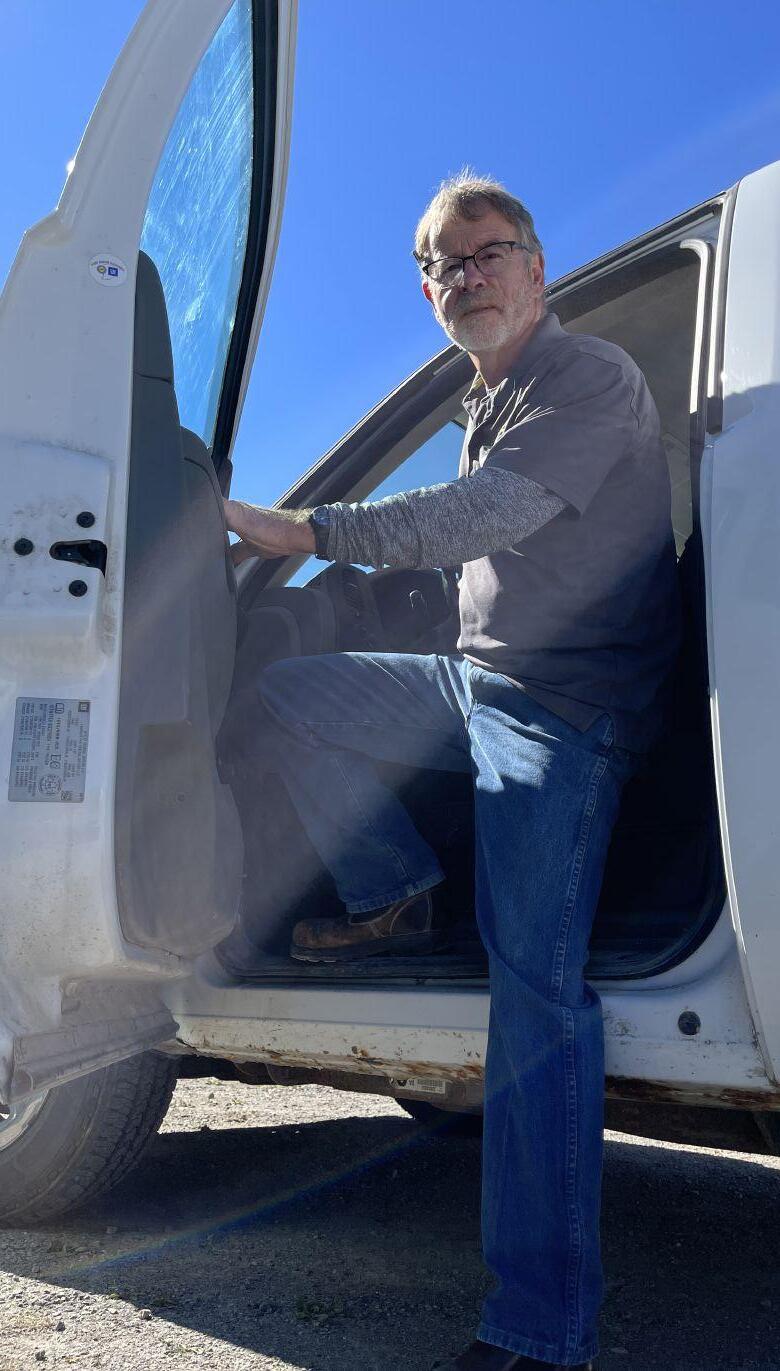
Most people don’t turn a temporary job assignment into a satisfying lifelong career. But then again, most people aren’t Stephen Snider, president of Steve Snider Construction.
Snider stumbled into the construction business straight out of school and never looked back. “The day after I finished grade 12, I started in construction. This was
supposed to be a temporary job, since I was planning to go to college in the fall,” he recalls. “I had just turned 17.”
Snider’s plan was to work in construction for a few months, earn a bit of money and then go back to school to study to be an electronic technologist, but things didn’t turn out as planned. “The contractor I was working for asked me if I wanted to apprentice,” he explains, “So I took on a carpentry apprenticeship.” That decision, made 45 years ago, would shape the course of Snider’s life.
natural career choice
“Building things,” as Snider puts it, was something he was always interested in, so a career as a contractor was a natural choice. “Even as a little kid,” he says, “I liked to build things out of wood, so this was a good fit.”
In 1980, Snider decided to get into business for himself. No longer an apprentice carpenter, he was ready to move on from being an employee to running the show. Newly married, he and his bride moved to Port Perry, Ont., where she had just been hired for a new job. “I knew a couple of people in the real estate business in the area and they kept me busy for a while with renovations,” Snider recalls. “Then, things just naturally progressed into building houses.”
He took on his first custom-build project in 1982. “It was a fairly basic kind of ‘80s-looking side-split,” Snider says humbly. “It wasn’t anything out of the ordinary.”
Today, Steve Snider Construction still does renovations and still builds custom homes, but they’re anything but ordinary. They’re models of energyefficiency and comfort. “When I started with R-2000 homes, it put me into a niche market,” Snider says. “I was catering to people who wanted a better home, better energy-efficiency and better indoor air quality.”
Many of Snider’s customers learned about the benefits of an R-2000 home and were looking for a contractor who could build to those standards. Steve Snider Construction stood out as a
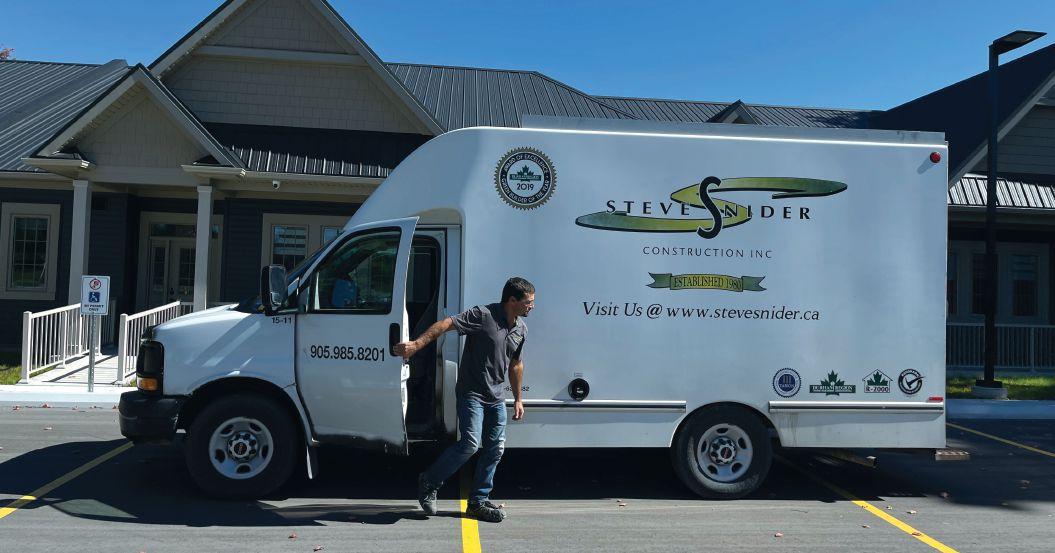
leader in this end of the custom homebuilding market, which translated into a lot of new business for Snider and his team.
However, Snider wasn’t content to just wait for customers to seek him out whenever they wanted an R-2000 home. Instead, he actively promoted the benefits of energyefficiency, and was so convinced that this standard was the key to building a comfortable home that he would take the time to inform his customers.
“If they weren›t looking to build an R-2000 home, I would educate them and explain the benefits,” he adds. “And I never had anyone say, ‘No, I don›t want to do that.’ Once they understood why this is a superior way of building a home, they wanted those benefits for themselves and their family.”
Steve Snider Construction has evolved over the years, and as new energy-efficient technologies come to market, Snider is always eager to learn about them and determine if they could be applied to his projects.
“In 1996, I got into insulated concrete forms,” he recalls. “So I built my first insulated concrete form home, from the footings to the roof. And since then, we have built many ICF homes.”
As Snider’s company grew over the decades, so did the size of his staff. Today, however, he only has five full-time staff. Everyone else is hired on to do a specific job. “I used to have a lot more staff because we used to do everything ourselves,” he adds, “from footings and framing to trim. But we got so busy that this approach didn’t work anymore. So we started subcontracting.”
Steve Snider Construction now functions more like a general contractor, and Snider says that his team does everything the sub-trades don’t or can’t. Finding subcontractors who understand Snider’s vision of energyefficiency was frustrating at first, he says, but over the years he has managed to assemble a team of tradespeople that he trusts and that have worked with him for years.
“I had the same plumber for 15 years and the same electrician for 35,” he says. “Once you train them, and everyone is on the same page, and they all do good work, there’s no reason to change.”
Like his subcontractors, Snider’s employees have been with him for a very long time. Three of them, he says, were
22_002431_Canadian_Contractor_OCT_CN Mod: September 29, 2022 2:07 PM Print: 09/30/22 11:38:33 AM page 1 v7









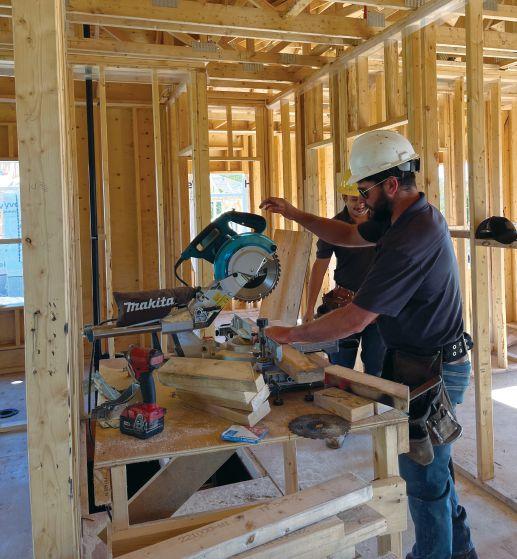

Three of five of his full-time staff started with Snider as co-op students and have built life-long careers with the construction guru. His apprentices, like Handy Andy who’s been with Snider for over 20 years, have been part of a family of homebuilders that care about energy efficiency.



hired as co-op students many years ago, and have learned and evolved with the business.
“We used to get co-op students every year from high school, so we got to see which students were good prospects,” Snider explains. “And three of my staff were co-op students. One has been with me for over 22 years. He was my first co-op student. Another one has been with me for probably 15 years now, and another for close to 15 years. He›s my general manager.”
Energy-efficient projects
Today, Snider takes on about 10 projects per year, including renovations, additions and custom homes. He says that keeps his team very busy. “Right now, we’re booking into 2024,” he adds.
Regardless of the scope and size of the project, energyefficiency is always top-of-mind for Snider. “Recently,” he says, “we did two renovations, one that was net-zero, and the other was net-zero-ready. I simply want to be able to deliver the best project possible and I know that the best money homeowners can spend on a building is when they’re investing in the envelope.”
For Snider, it just makes sense to build this way. “If you make the building envelope airtight and efficient, you can
Join a completely Dealer-Owned company today.
Dealers share and participate equally without the influence of any external shareholders. Harness our massive buying power, comprehensive distribution, national brand recognition and marketing support.
put whatever mechanicals in there that you want, and you’re going to get the most efficiency out of them,” he explains.
Homeowners, Snider adds, experience the difference a quality building envelope makes. “They notice the difference in indoor air quality versus their previous home, and they often remark on how comfortable they feel in their new home,” he adds. “They’re also very efficient to heat and cool, and that’s a big plus.”
Once a customer experiences one of Snider’s energyefficient home designs, they’re usually very grateful and happy with the end product. “One of our customers remarked that the energy savings they see every year are enough to cover their increase in property taxes,” Snider laughs. “Our customers are so happy with their new homes and recognize the extra effort everyone puts into their project that many decide to express their gratitude to our team in tangible ways to thank them for the quality of the workmanship.”
Not only are customers celebrating Steve Snider Construction for the quality of their work, but so is the industry. “We’ve received numerous awards for air-tightness and energy-efficiency over the years from EnerQuality, as well as from the Durham Region Home Builders Association,” Snider says. “We were also a finalist on a national level at the CHBA conference awards.”
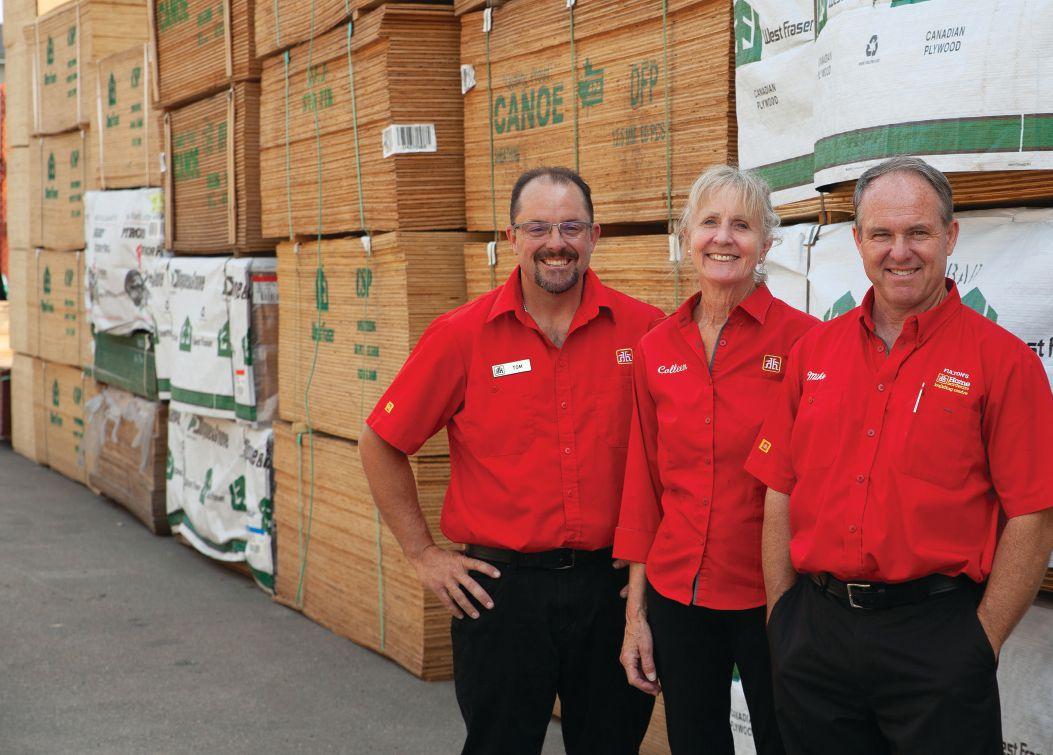

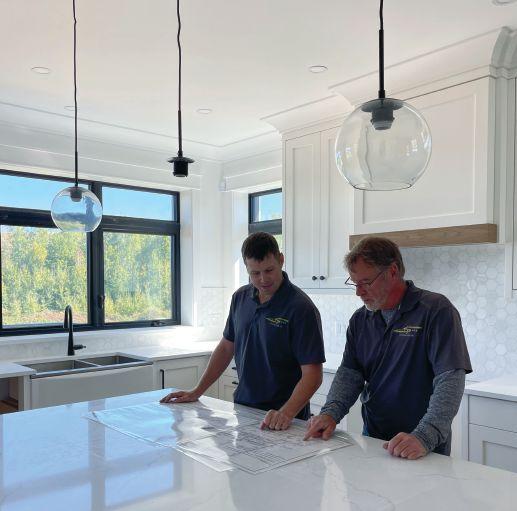
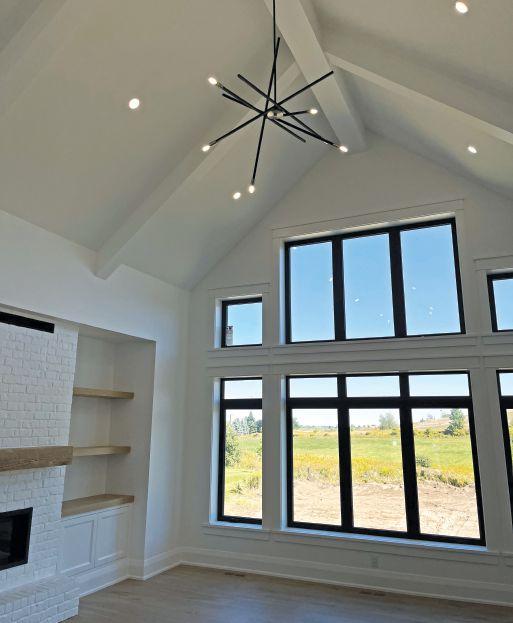
edge technology and keep adding these improvements into our projects,” he says.
Some customers are already sold on the idea and they want an energy-efficient home, not necessarily because they’ll save on heating and cooling costs, but because they know that an energy-efficient home is a comfortable home, and a healthy home.

Snider’s no stranger to the media. His office is filled with clippings from the Toronto Star and other newspapers as well as awards from organizations like EnerQuality that have recognized his company for the quality of his work and his keen ability to create energy-efficient homes.
“We usually sit down with the client and we have a conversation to see what their specific goals are,” Snider explains. “If it’s a renovation, there may be existing structural or cosmetic issues. If it’s a new build, we need to know what their vision is regarding energy efficiency and maintenance, which is then incorporated into their architectural design. It’s a process.”
Located in Port Perry, Ont., Steve Snider Construction takes on projects in Durham, as well as in the more picturesque part of the province, the Kawarthas Northumberland region. When discussing a project with a potential customer, Snider takes the time to educate that customer on the benefits of a tight building-envelope, insulation and building to R-2000 standards, or beyond. “As a founding CHBA member of the Net-Zero Home Building and Renovation Program, we are able to monitor and implement the leading
The definition of an energy-efficient home has changed over the decades, and Snider says that he can see the concept evolving even more in the near future. “I think some consumers are conscious of their carbon footprint, and that they will keep that in mind when making decisions about the design of their future homes,” he explains. “So I think the next phase in energy-efficient home construction will focus on the carbon footprint and how we can minimize it.”
Whatever the future might hold, it’s clear that Steve Snider Construction will continue to push the energy-efficiency envelope and to promote the benefits of building homes that customers value. cc
Although Hardy tried his hand at a couple of other things, his true passion had always been the construction industry.

Milwaukee Tool entered the cordless jobsite cleanup space in 2010, and after countless conversations with users, discovered a significant need for medium to large capacity wet/dry vacuums that offered better mobility, durability and versatility on the jobsite.
“Cleanup with a corded shop vacuum is a headache,” says James Mitchell, senior product manager at Milwaukee Tool. “You need to worry about finding a power source and running multiple extension cords, not to mention the potential tripping hazard.”
Milwaukee Tool’s goal was to deliver a cordless wet/dry vacuum system that outperformed the corded counterparts from every angle: cleaning speed, suction power, durability and ease of use. “What we’ve been able to accomplish on a cordless wet/dry vacuum hasn’t been done before,” explains Mitchell.
The recently launched M18 FUELTM 6, 9 and 12 Gallon Wet/Dry Vacuums use the POWERSTATE™ Brushless Motor to pick up more jobsite debris in the same amount of time as a 3.5 to 4.25 Peak HP corded wet/dry vacuum. Interchangeable tanks, carts and motor heads offer versatile holding capacities and mobility options, adds Mitchell. “This gives users the opportunity to mix and match the vacuum components, so they can adapt the configuration for different jobsites and trade-specific applications.”
HOW MILWAUKEE TOOL IS BRINGING MORE MOBILITY, VERSATILITY AND DURABILITY TO THE JOBSITE CLEANUP EXPERIENCE
The M18 FUELTM 6, 9 and 12 Gallon Wet/Dry Vacuums also feature crush and twist resistant hoses to provide more cleanup flexibility, plus reinforced casters to extend the lifespan of the wheels. “This vacuum has the durability to withstand even the harshest jobsites,” says Mitchell.
But Milwaukee Tool’s innovation didn’t stop there. After doing research in the field, Mitchell says they noticed innovation was lagging with vacuum accessories. “We saw an opportunity to innovate the current standard vacuum accessories with durable, trade-focused attachments that solve common user frustrations and perform in high-demand applications,” he explains.
The 19 innovative AIR-TIPTM vacuum accessories—fully compatible with other wet/dry vacuum brands—can tackle everything from drywall dust to wood and metal shavings. Mitchell anticipates there are a few AIR-TIPTM vacuum accessories that will become favourites for home builders, renovators and general contractors.
“The AIR-TIPTM Dust Collector suctions to the wall and collects drywall dust before it creates a mess,” says Mitchell. “For jobsites where you’re dealing with nails and screws, the AIR-TIPTM Magnetic Utility Nozzle catches metal hardware before it gets sucked up to prevent damage to the vacuum.”
Other popular accessories include the AIR-TIPTM Non-Marring Utility Nozzle Kit to avoid marking finished surfaces during
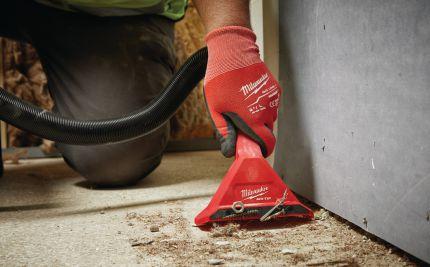
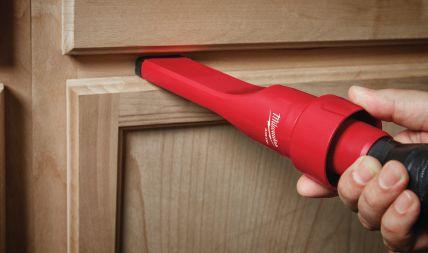
From the top, the AIR-TIPTM Magnetic Utility Nozzle (49-90-2032) and the AIR-TIPTM Non-Marring Crevice Tool (only available in the Non-Marring Kit 49-90-2034)
cleanup. There are also accessories with pivoting joints and right-angle designs for hard-to-reach places.
“We’re excited to have a wet/dry vacuum that serves every professional tradesperson on the Milwaukee platform,” says Mitchell. The M18 FUELTM 6, 9 and 12 Gallon Wet/Dry Vacuums are fully compatible with the M18 TM system, providing over 250 solutions on one battery platform.
Learn more at milwaukeetool.ca.
By James Hong

The Ontario Ministry of Labour reports falls on construction projects are the main cause of workplace injuries in Ontario. Specifically, framing and roofing jobs are high-risk activities for these accidents. The Occupational Health and Safety Act identifies and regulates the employer’s obligations for keeping workers safe. Training is the number one means of protecting workers. Working at heights not only requires training, it requires experience and close supervision. Employers are responsible for ensuring workers have the proper training and certification for fall protection. Certification training teaches employees to understand the serious risk of injury when working at heights and covers everything from working with ladders and harnesses to minimizing and avoiding fall accidents. The certificates are valid for three years.
Working at elevations without adequate fall protection puts workers at a high risk of serious injuries and death due to falls. The OHS regulations stipulate that when working on an unguarded platform more than three metres from the ground, fall protection is mandatory. This includes training to understand the risks and fall protection systems. If there is any risk of falling three metres or more, the regulation is compulsory.
“When workers are at risk of falling from an elevation in excess of 7.5 metres, the employer must have a written fall protection plan in place and available at the workplace before work with a risk of falling begins.”
Certain steps must be taken to protect workers. Permanent or temporary hand and guardrails are required as a barrier around an opening or edge to prevent a fall. Fall restraints should be used to limit worker’s movements to only as far as the edges of the working area. Fall restraints are configured to a fixed length line to prevent workers from working too close to an opening or roof edge. Each fall-restraint device must have anchorage points with a maximum expected load of 800 pounds and must be engineered capable of supporting 5,000 pounds with safety lines limiting the free fall distance to 1.2 metres.
Fall-arrest systems include a lanyard or lifeline, a harness or belt, and, most importantly, an anchor that protects workers after a fall by stopping the person from hitting the surface below. And, last but not least, the training and availability of safe work procedures to explain risk assessment, preliminary steps for preparation and safe work practices.
If hazards are found during the hazard assessment stage, the hazard prevention plan must be put in place to minimize the risk using fall-protection measures. These measures include installing walls, floors, railings and standard guardrails and using personal fall restraint or fall arrest equipment. Following the risk assessment, a site specific fall protection plan implementation is required with ongoing training and review as the project proceeds.
WorkSafe BC says, “When workers are at risk of falling from an elevation in excess of 7.5 metres, the employer must have a written fall protection plan in place and available at the workplace before work with a risk of falling begins.” As we know, not all employers comply with the rules, sometimes simply because they are not aware or the requirement is too much of a learning curve. Whatever the reason, workers must feel empowered to speak up for their right to safety. Not only do they have the right for a safe workplace, they also have the responsibility to inspect equipment for flaws and use fall protection when it is required.
The full assessment includes worker training requirements; identification of fall hazards; methods of fall protection needed; and procedures for assembly, maintenance, inspection and dis-assembly of the equipment. Perhaps one of the most important aspects of the training is to educate workers on the correct fitting of the equipment. Even if everything else is in place, a poorly fitting harness will not properly protect workers from a fall. It’s also critical to inspect for adequate attachment points on floor openings, guardrails, ladders and scaffolding.
It’s important to remember that not only the workers that are working at heights are at risk of accident injury. Workers passing through overhead active work areas are also at risk. Restricting access to those areas and wearing the proper personal protective equipment helps prevent accident injuries. Remember, the best fall protection is fall prevention. Be safe. Be well. cc
James Hong is an OHS consultant, writer and journalist.


By Steve Ryan

Ifyou are a contractor, then the odds are you have indeed been battling the risk and uncertainty of rising costs. By now you know enough to be careful about the prices you quote since costs today don’t reflect what you will pay when it comes time to do the job. From a builder’s perspective, it’s pretty obvious that inflation is here. So why the hesitance from economists and public policy makers to acknowledge that?
We get some clues by recognizing that inflation is not really defined by past cost increases. The really troublesome things kick in when there is a general expectation that similar increases will continue into the future. When businesses worry that their costs will be substantially higher in coming months they raise prices now in anticipation of that. Once workers are convinced they will fall behind the future cost of living, they insist they must start to earn more now. Instead of reacting to what has happened, we all try to stay ahead of an uncertain future. When those inflationary expectations set in, they trigger a chain reaction that is devilishly difficult to control.
When central bankers or policy makers downplay price increases of the past year, they aren’t trying to deny they happened. They are hoping to discourage those inflationary expectations that trigger pre-emptive price and wage demands.
All very theoretical, and you might wonder what it has to do with you or your business. If you were around to witness things in the 1970s, you know. For that decade, inflation averaged nearly eight percent and spiked above 10 percent regularly. Most products saw price adjustments (always upward) multiple times each year. Try bidding on a job when you have to allow for two or more rounds of price increases on everything between doing the estimate and doing the work. You may feel you are in that situation already, but there is more to the inflation story.
Talk of inflation is usually followed closely by worries about interest rates. Why is that? The short answer is they move together. If inflation threatens to reduce the future value of money then everyone, including lenders and investors, demand a higher annual return to compensate for that. Interest rates will rise. If rising costs already had you concerned, now we have to think about the impact of rising interest rates.
It’s time to look at your cost of borrowing. If you
have borrowed heavily, for example to buy property for development, take the time to calculate what your borrowing costs would be if your interest rate rises one, two, or three percent.
It doesn’t stop there, though. Most residential customers, whether buying a home or renovating, will depend on borrowed money. Their cost of borrowing will rise, which can have a major effect on what they can afford.
And it doesn’t stop there. Perhaps the biggest concern will be those who already have homes. Close to 500,000 homes were purchased in Canada in 2017. Many of them have a fiveyear mortgage that renews this year. They could face interest rate increases of one or two percent upon renewal. A onepercent increase on those 2017 mortgages will drive payments up by 12 to 15 percent. Nobody, especially public officials, wants to face the image of families losing their homes to mortgage costs they cannot afford. Perhaps that is the main reason they strive to head off those inflationary expectations. Perhaps the much-maligned mortgage stress test will do its job and homeowners will have that much cushion in their monthly budgeting. The stress test only took effect in 2018. It was in anticipation of just this scenario.
Demand among first-time homebuyers won’t go away, but rising interest rates will reduce what they can afford. Demand from other parts of the residential market may be less resilient. For years now, the financial logic for trading up, for buying investment property, even for doing major renovations, was driven by a confidence that rising property values would justify the investment. Higher borrowing costs will shift that financial logic and take some of the demand out of those markets. Paradoxically, inflation across the economy as a whole could have the opposite effect in residential construction.
The point here is not to predict doom and gloom. The message is that change is coming. It will impact more of your business than you are seeing right now. As with any change, it can be a threat or it can be an opportunity. Get your financial house in order and be ready to work with a new reality. cc
Steve Ryan is the founder of MMI Professional Services. MMI is committed to the success of contractors by helping them develop the business and management skills they need. For information on ways to run a better building business contact the writer at steveryan@mmiproservices.com.


Generation Solar shows off its expertise in photovoltaic integration.
By Gordon Wornoff
Generation Solar has been designing and installing photovoltaic systems in Ontario since 1998. Located in Peterborough, Ont., co-owners J.P. Pawliw and Simon Boone are engineers and some of the province’s brightest custom solar energy installers.
Boone and Pawliw sat down with Canadian Contractor to discuss their progressive build in Roseneath, Ont., which incorporates cutting edge alternative energy systems into a gorgeous rural century home.
How did this project originate and what did it entail?
The owners reached out to us. They had a ton of exciting ideas and wanted to explore many forms of renewable energy.
Their main priorities were the ability to offset energy consumption from the grid and also have backup power for when the grid goes down. They had a propane generator and also wanted it to be integrated into the system.
They have an old mill and mill pond on the property they were curious about generating power from. We explored that option, but it was a lot of work for a little gain.
We solidified a plan that included a solar array and a battery backup. They had a drive shed that they tore down and replaced with one that was designed to accommodate solar. It has a monoslope roof to make maximal use of the footprint and get as much solar array as possible. The slope is optimized for solar gain and we were able to influence the truss design to ensure it would meet permit requirements from the start. You don’t get the chance to do that in a retrofit. We also ensured the equipment room was up to spec to accommodate the inverters, batteries, and EV chargers.
We installed a 20-kilowatt solar array, an 18kw inverter bank, and a 36kw-hour battery bank. Their 23kw propane generator is waiting in the wings to tie in.
The client was only allowed to export 10kw to the grid but the inverters can handle 18kw. This meant they could export the full 10kw and have eight kilowatts to supply loads. For instance, they’re charging the car and it might need fivekilowatts. They still have the ability to export 10kw and have a little leftover to power other loads around the house.
That was the challenge - we have a lot of generation



jurisdiction, we could export 20kw and the system is easier to program. Energy is political in Ontario, as it is anywhere in Canada and the rules change depending on who gets elected. Additionally, every jurisdiction has different rules so equipment needs to be flexible. It’s our job to ensure equipment is compliant in our jurisdiction.
Tell me about your clients. Are they environmentalists, people looking for economic benefit, or somewhere in between?
The MicroFit program in Ontario has been gone for several years now, so the idea of generating power with solar panels and selling it is a thing of the past. Now with net metering, you generate energy on your rooftop and that is pushed into your home and offsets energy you would have otherwise purchased from the utility. Exported energy offsets consumption at night or other times when it’s not sunny. So in that context, yes, saving some money is part of the consideration our clients have for these systems.
Most of our clients have a very strong environmental interest. They want to reduce their consumption and load from the grid and some are interested in reducing their reliance on nuclear power or other potentially non-renewable energy sources.
As an aside, the Ontario provincial government is proposing to bring back a number of natural gas plants to make up for the expected shortfall in the coming years as the nuclear plants go off line for refurbishments. The carbon footprint of our grid is actually going to go up in the next few years.
We’ve talked money and climate, but the third motivator is resiliency. Some people are quite concerned about the long-term reliability of the grid. As well, a greater number of people are relying on more energy-critical devices and they want those devices to be functioning and available to them, independent of the grid.
The service we provide is often part of a bigger picture. The clients in Roseneath are a good example. They’re putting in geothermal, they’re transitioning away from fossil fuels. They’re electrifying their life. They clearly have an interest in reducing their carbon footprint.

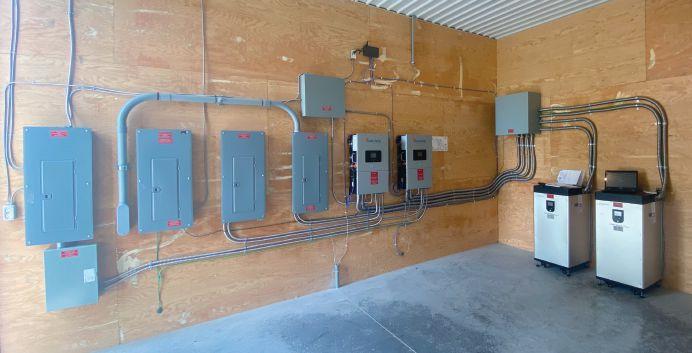
“Deep electrification” is the displacement of fossil fuels with electricity. People are replacing gas furnaces with geothermal, replacing gasoline-powered cars with EVs with the intent of reducing their carbon footprint and getting it all from electricity. Then you can produce that electricity using renewable energy. These clients have made many other choices to make their home more energy-efficient; they’re using heating systems that don’t consume any fossil fuels; they’ve bought an electric tractor, electric lawnmower, an electric vehicle;
and the last time I was there, they had a pair of electric bikes – we are just a part of all that.
How does the geothermal system fit together with solar energy?
Geothermal is a heating technology, just like a gas furnace – it’s a ground-source heat pump. It uses more electricity than a gas furnace, but it uses far less electricity than an electric furnace. It displaces fossil fuels with electricity in one of the most efficient ways possible in terms of space conditioning. It’s more electrical demand, but we like that
because it opens up the possibility for adding even more solar to meet that electrical demand.
What are some new or interesting technologies you’ve been using?
We included lithium batteries on this job. They are fairly new, but I would say they are the current technology. Most people are considering lithium batteries despite the price premium. Compared to older, lead acid batteries, lithium offers two to three times the lifespan and half the footprint. They are two to three times the cost, but a lithium power bank today should last 20 to 30 years.
One thing about lithium power banks is that they are not plug-and-play replacements for each other. They are a more customized solution and more complicated to design, like a puzzle. They can be a little more proprietary as well.
Take the Tesla Powerwall for instance. You cannot charge that from a generator, so that would not have been a suitable application for this project because, ultimately, they wanted to be able to do that. On this build, we elected to use an inverter that was battery-
agnostic, which would pair up with many different options.
How big is your company and how many projects a year do you complete?
We have around 10 employees and we complete somewhere between 12 and 24 new builds per year. We also do a lot of upgrades; we will remove systems so the owner can replace their roof and then reinstall it after the roof has been replaced. We do preventative maintenance calls and we also do service calls when systems aren’t working properly.
Our target demographic is high-end residential clients. Most of the people we do business with are homeowners, but we install quite a few modules for commercial, agricultural and industrial clients as well.
When the Ontario government introduced the MicroFIT program
in 2009 and started paying people to produce energy, (which they no longer do) did it create a goldrush atmosphere in the industry? Like how you see vape shops everywhere now?
During the MicroFIT program there were a huge number of new companies and the vast majority of them are gone now. They didn’t create the structure or the foundations to keep going. The market got soft as well and couldn’t support that many, but ultimately many people cashed in and got out and left a legacy of problems behind them.
We have a very broad and deep set of skills for a small company. We have multiple interests and we go where those interests lead us, which steers towards adaptability. We also have deep roots within the industry. For instance, on the Roseneath build, when we needed the system to do something it wasn’t programmed to do, we called the manufacturer, discussed our issue
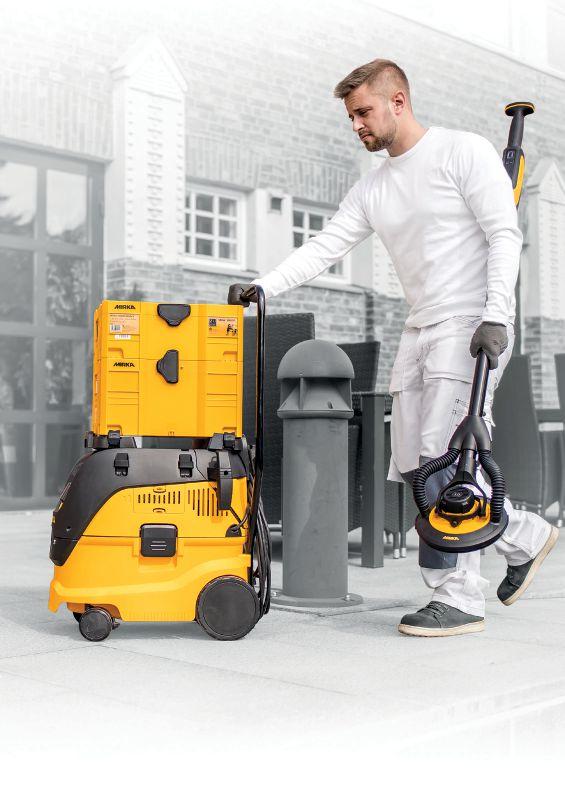
with the engineer, and they tweaked the firmware to make it do what we needed it to do. We’ve been in the industry a long time and have a lot of great relationships with other companies. It’s collaborative – we’ll call each other up to sort out a problem.
We have a wide variety of clients and a wide variety of goals. For instance there’s not much of a business case for buying an infrared inspection camera and all the rigorous training that comes with it. But we think it’s important and we did that and our clients appreciate it. Over time, the investments are paid off, but it’s not a financial decision.
We invest in training and equipment because it increases the diversity and resilience of our organization. There are many ways to run a business – the way we have chosen to run our business is based on a long-term vision that puts relationships first. cc
Perfection from any angle. + Less than 8 lbs. + 180˚ flexibility + 100% comfort
FEATURES:
• Full Force System - Random orbital movement in combination with unique pad design enables Mirka to leave out brushes. 100% of sanding pressure actually goes to sanding
• Brushless Motor Technology - Enables compact design and no need to change carbon brushes, less downtime. Constant speed under load, no loss in efficiency under heavy pressure.
Dual Suction Points - Less dust in the air and clean abrasive cuts better
• Bluetooth® Technology - Monitor vibration exposure and register for additional warranty with only a few clicks.


Get your clients’ homes ready for the electric vehicle revolution
By Alex Mackenzie
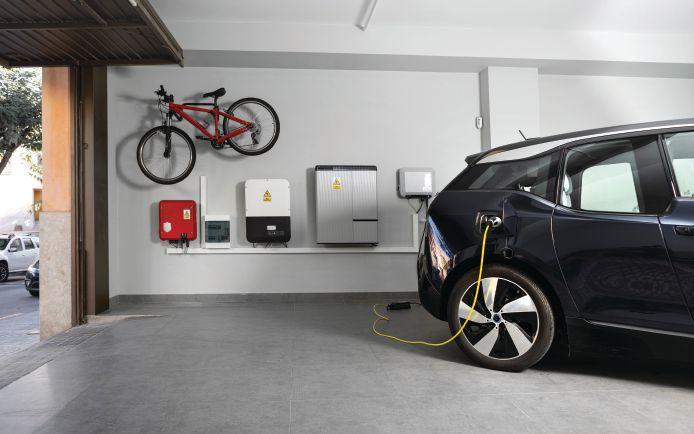
Withthe current state of the climate crisis, it’s no surprise that municipalities and provinces across Canada are encouraging more electric alternatives to fossil fuels. Vancouver, B.C., often a bastion for eco-friendly legislation, has even gone so far as to ban the installation of natural gas lines in new low-rise developments. At the same time, Ontario is pushing to build 400,000 new electric and hybrid vehicles by 2030 with the city of Toronto working to build a fleet of EV’s for its own municipal use.
While there is still much debate surrounding the environmental impact of building electric vehicles, and the issues of human rights violations with regard to the mining of minerals needed to produce lithiumion batteries, the current consensus is that electric vehicles are going to be a major factor in reducing carbon
emissions and eventually weening humanity off of our dependence on fossil fuels.
Despite the bright future that EV’s promise, the current reality is that they are mostly a luxury item, far out of reach to the vast majority of Canadians. Hopefully, as the technology improves, new materials for battery production are sourced and more car manufacturers enter the market, the role of the EV will shift from luxury novelty to automotive standard. Until then, finding places to charge an EV remains something of a challenge. That is why the best solution is to have a charging terminal installed in the garage, carport or driveway where the car itself will be housed.
In order to provide our readers with the most accurate information on
EV chargers and their installation, we spoke with some of the top professionals in the industry: Russell Baker, spokesperson for Toronto Hydro; Mark Marmer, owner of Signature Electric; and Lorned Hedges, national marketing manager for Schneider Electric. All three agreed that the first thing that a contractor needs to do before installing an EV charging station is to check the current load and usage to determine if there is availability to add in a charger.
“Before an EV station can be installed, there has to be adequate capacity on the customer’s electrical panel and an adequate connection to the distribution grid,” says Baker. “A licensed contractor can make this determination and Toronto Hydro should be contacted if an isolation or connection upgrade is required. If a homeowner’s contractor determines that a service upgrade is needed, customers should submit a service connection request to Toronto Hydro. If necessary, Toronto Hydro will schedule a site visit at the home and will provide a list of requirements necessary to complete the installation.”
So, the capacity needs to fit the load, simple enough, but what do those numbers actually look like? Marmer goes into a bit more detail stating, “This load part is very important because if a charger, depending on what size it is, is going to draw 40 or 60 amps. If you have a 100-amp service, this is a significant piece of the puzzle whereas, if it was 200, not so bad. If we’re building a brand new, single
Rust-Oleum was founded on the principle of creating innovative products, and after more than 100 years, they are just getting started. A top Canadian supplier for both consumer and industrial paint and coating solutions, Rust-Oleum has grown to be a global leader in manufacturing innovative coatings that empower do-it-yourselfers and professionals alike. Their newest solution – Turbo technology, is a revolutionary application process that enhances the power of regular spray paint. The Turbo Spray System delivers the same trusted protection of traditional RustOleum paints and now gets the job done four times faster.
Turbo spray paints are an innovative solution recommended for larger projects that need to be finished quickly. Available in a 656 and 737-gram size, the cans work four times quicker than traditional spray paints— offering the speed and quality of professional spray equipment without the hassle. These large cans hold almost twice as much paint as a traditional aerosol in order to cover two times more surface area per can. How is this possible? The valve and nozzle work together

to spray more paint per second covering more surface area. It provides a spray pattern of up to 10 inches (25 centimeters) making it the perfect product for project completion.
Turbo technology works well with several of the most professionally-trusted products available from Rust-Oleum including ULTIMATE Turbo Enamel, as well as Zinsser’s Cover Stain Oil-Base Primer-Sealer and Bulls Eye 1-2-3 Water Based Primer.
ULTIMATE Turbo Enamel has a formula that offers the best corrosion protection possible, complete with long lasting high-gloss colour, and superior durability. The wide spray dries quickly to achieve a tough and attractive finish and is tack-free within four hours, allowing for quick and easy project completion. ULTIMATE Turbo can be used on structural steel, handrails, doors, storage tanks, equipment, machinery and more.
Zinsser Cover Stain Oil-Base primer-sealer is perfect for blocking stains, concealing dark colours and preventing tannin bleed. It is great for sealing exterior wood. Bulls Eye 1-2-3 is a premium water-based whole-house primersealer that can be used to seal porous surfaces
like wood, drywall, cured plaster, and even concrete and brick. With Turbo technology, users can tackle large projects faster and easier than ever and top coat in just 30 minutes. These sprays can be used on garage doors, sheds, and more – anything that’s too big to spray with a traditional aerosol and too small for a professional spray gun.
The Turbo line of spray paint is simple and straightforward to apply. This product is to be used outdoors or in a well ventilated area and sprayed between 10 and 32 degrees Celsius. Rust-Oleum’s innovative Turbo Spray System is changing the way users complete their projects, offering a unique product that provides a quick, durable, long-lasting finish four times faster than traditional spray cans. To learn more, visit Rustoleum.ca.
family home, then maybe we can look at making the service a bit bigger than we were going to. Maybe 100 amp service would have been adequate for a certain size of home, but maybe, at a relatively small and incremental cost, we can increase that service to 200 amps. If we’re not tearing out the 100 to put in the 200, we’re just putting in a 200, maybe another 50 percent cost, that leaves us more options for loads.”
Another aspect of this added load that needs to be considered is the run time. “Some loads within your house like an oven or a hot water tank, they cycle on and off,” says Hedges. Marmer compared this charger runtime to cooking a turkey with every burner in use on the stove every single night. So, unlike the simple task of plugging in a new freezer or stove, installing an EV charger requires quite a lot more work and consideration on the backend.
Location, location, location
Another thing that needs some forethought is where the unit will be installed. Hedges notes, “The next thing to look at is location. When the installer arrives at the owner’s home, they’ll ask questions like, ‘“Is it in the garage?” “Is it in a carport?” “Is it going to be mounted on the outside of the house?” All are suitable locations to put car charging stations. Once the location is determined, they need to give consideration for and have some discussion about how the car will be parked, because then the next step is considering the length of cable. In a garage, do you park it on the lefthand side or the right-hand side because are you pulling in or backing in? Do you want to drag a cable over top of the car? Probably not. So, these are some of those convenience considerations that customers need to think about.”
Marmer echoed this concern. “Don’t necessarily put the charger where it’s most convenient for you. You should, as best you can, ask the customer what vehicle they are purchasing, how do they orient their vehicle and where is the charge port. Because you don’t want to get out there and find out that the door of the car hits the charger every time or that you trip over the cable every time you get in or out of the car. It’s something you’re going to do, possibly almost every single day. If I can avoid taking 25 feet of cable across my snowy driveway and not having to wrap it up every morning, I will. Try to keep things as close as possible so that the experience is enjoyable and not too difficult and that will add to the enjoyment of the vehicle itself. That being said, people don’t always know what car they’re getting. So, then you may have to just simply look at the shape of the garage.”
Beyond finding the best location for the charger based on which car the client has or is getting and how they intend to park it, contractors should also consider how much room they have to work with in that spot. “You’ll see, when you’re in a single-family home and you’re in a garage, you are going to soon find out that there is not a lot of just easily available real estate,” warns Marmer. “That space that you thought was so big between the two garage doors is only
about six inches, barely enough to mount a charger. There’s just not a ton of real estate, so it takes a little bit of thinking as to where this is going to end up. There’s a whole variety of chargers available, but it’s a good point to be thinking about the physical size of the charger. Some of them have hooks on the front, that’s how they manage the charging cable. Is there enough room in front for you to do that? Would you rather have had the hook off to the side for the cable? A lot of things to think about.”
Setting up the charger so that the cable can be properly stored and is not causing an obstruction within the garage or on the driveway is not only a convenience issue, but a safety one as well.
Hedges says, “The biggest safety factor is taking care of the cable. You don’t want to be running over the cable or putting the cable where it’s going to be damaged or even having the station where it could be run into or damaged in some effect. For the most part, the installation of a charging station is very similar to installing an oven or a hot water tank. The wiring is very simple for a contractor. It’s nothing that they’re going to find technically difficult or challenging from that perspective. All charging units are built with ground fault protection in them so that if there is faulty wiring, if the cable did get damaged and it’s laying in a puddle, the station is going to turn itself off. Just like the ground faults you have around your kitchen sink or in your washer, same technology.”
As we’ve seen, there’s quite a bit more that goes into the process of installing an EV charger at a residence than just plugging it in and hooking it to a wall. Is it even worth the hassle? If you want to be able to functionally use your car and you don’t have the ability to charge it elsewhere, like at your office while you work, then the answer is yes.
While all electric vehicles come with a standard plug, like you’d plug in a toaster, the amount of charge that is being pulled into the vehicle in that configuration is going to be minimal. This is called level one charging.
Eventually, we will most likely see EVs and EV charging stations replace gas-powered cars and gas stations, perhaps even within the next few decades. So, keeping charging stations in mind when working with clients on renovations and new builds now will put you ahead of the game as the EV market continues to grow. cc
Baker, Hedges and Marmer shared more of their thoughts on safety and need when it comes to electric vehicle chargers. Visit our website for an extended version of the interview where Marmer offers additional comments on the Electrical Safety Authority, Baker explains level two and three charging and Hedges offers lessons on battery wear. Full interview at canadiancontractor.ca.

What caught our interest
Powerwall is a battery that stores energy, detects outages and automatically becomes the home’s energy source when the grid goes down. Unlike generators, Powerwall keeps the charge without noise or fuel and can be paired with solar and recharged with sunlight. It also stores solar energy for use when the sun isn’t shining. Powerwall can be used alone or in combination with other Tesla products to save money, reduce carbon footprint and prepare homes for power outages. With the Tesla app, users can monitor the home’s energy production and consumption in real time. They can set preferences to optimise for energy independence, outage protection or savings. With instant alerts and remote access, the system can be controlled from anywhere. With easy installation and a minimalist design, Powerwall complements a variety of home styles. The
se.com
compact, all-in-one construction features versatile mounting options for indoor or outdoor spaces. Energy capacity is 13.5 kilowatt hours with 100-percent depth of discharge and 90-percent round-trip efficiency. It generates seven kilowatthours peak power and five continuous with seamless backup transition and a clean sine wave output Installation can be on the floor or wall, indoor or outdoors. Rated for negative 20- to 50 C temperatures with a 10-year warranty.

Schneider Electric has launched its EVlink home smart charger. It’s designed to intelligently manage heavy electricvehicle-charging energy loads in homes by monitoring the vehicle’s power consumption in real-time, predicting spending and setting budgets with four different modes: “charge now,” “green charging,” “cost effective,” and “customized schedule.” Connecting to the complete home energy system, homeowners can control all of their electrical devices and monitor their consumption through a single application. It’s a worry for eco-conscious homeowners as houses already generate more carbon emissions than transportation, industry or energy production. The Wiser home energy management system allows users to control how and when their EV is charged and balance charging against other energy guzzling devices via their mobile whenever they need to. By activating the “cost effective”
mode, Wiser creates the most efficient schedule based on the cheapest electricity tariff available. For homeowner’s who have set energy limits, Wiser can also stop charging each time consumption reaches the power limit contract. Wiser’s intelligent energy management system automatically balances the loads to enable minimal disruption and maximum efficiency for homeowners. For instance, if they begin cooking, the system syncs with Wiser to understand energy consumption in conjunction with other appliances in real time to avoid any disruption or tripping. In 2023, users will have access to the “green mode” where homeowners can fully utilize the power of renewable energy. For example, if solar energy is available, the system will automatically switch to this source. Additionally, when solar power is at its peak conversion time, the EV can be set to charge at this time, avoiding having to use costly grid energy. STORE SOLAR FOR LATER tesla.com
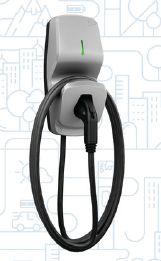
The Flo Home X5 level two charging station is designed for residential homes and is universally compatible with all models of electric and plug-in hybrid vehicles. It can easily be installed both indoors or outdoors and is built to withstand extreme weather conditions. The X5 is network-connected, which allows users to configure the units’ settings remotely and view usage data from a secure online portal. It is certified to operate at temperatures ranging from -40 to 50 C and built to last over 10 years. Users can manage their charging time around power peak demand and protect the electric vehicle and the home against fluctuations in the power grid. Control is via the HomePlug power-line communication interface. The X5 includes a powersharing feature to connect two units on the same breaker. Remote configuration is possible through an online portal. The industrial-grade cable withstands the full range of operating temperatures. The X5 comes in a robust and waterproof NEMA 4X-certified aluminum casing with a platinum finish and highresistance coating
OFFERED WITH FISKER wallbox.com
Wallbox Pulsar Plus offers a compact size and a powerful performance for faster electric vehicle charging at home. Designed for easy installation, Pulsar Plus can charge any electric car on the market and is future-ready to handle tomorrow’s more powerful EV batteries. It offers 240-volt, level two charging technology in an small size with adjustable capacity from 16 to 40 or 48 amps, depending on model. Pulsar Plus can add up to 30 to 35 miles of range per hour. Pulsar Plus can be connected to a smart device using the MyWallbox app to wirelessly control and monitor the charger via Wifi or Bluetooth. Users can also use Amazon Alexa or Google Assistant to control and monitor the charger. Pulsar Plus is also enabled to plug in, charge, and manage the schedule even without an internet connection. The smart chargers will be available starting November 2022 in Canada.


































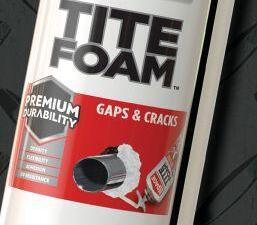

Pete has been in the business for over 40 years. He’s earned his reputation for building stunning custom-built homes, is highly involved in the union and trades associations, and cares for his community. He’s been preparing to hang up the safety hat for half a decade and, at 60, Pete can see the sweet bliss of early retirement on the horizon. At his company, he’s assembled a team of contractors who work well, train hard, and attend seminars on the off season to stay up-to-date on the new trends and certifications in the trades. He’s already put the necessary steps in place for his succession and has been training his company’s general manager, Noah, to take over for the last five years.
Now that he’s preparing to leave, Pete’s been sending Noah to more of the tradeshows and association meetings in his place. He wants Noah to build the connections on his own and pass on the legacy of the company he’s worked hard to build. But Noah’s been making his own reputation among his peers. Pete’s heard rumours that Noah likes to drink at association dinners and his lips get looser with each shot of liquor. Recently, the president of a big association told Pete that Noah was bad-mouthing sub-contractors and sharing client information at the last winter conference.
Noah’s been with Pete since he was in high school. Pete helped put him through the apprenticeship program and invested his time and energy into shaping the worker he is today. Pete chose him for his ability as a journeyman, his outstanding work in construction and the effort he’s shown over the last 20 years. He’s confident in Noah’s leadership skills, but he also worries that Noah’s tipsy reputation could tarnish what he’s worked so hard to build.

Vince was losing faith in the apprenticeship system. He believes journeypersons should treat their jobs as a vocation, but worries that putting the time and dedication into moulding the next generation might not pay off. Michael Davis recommends Vince stick to his values, appreciate his apprentices for their hard work and look at great journeypersons as potential future collaborators.
Keep on the good fight Vince. Don’t be afraid of training an employee and have them leave and be competition. You can still collaborate in the future. If you’re able to train an employee to become confident enough to venture on their own, then you have provided excellent training and should be proud of yourself. If you can keep them, great, but if they insist they want to move on then you are also doing the industry a favour by bringing more qualified workers to the market. Be more afraid of an employee who isn’t trained, and stays with no interest in growing. When recruiting new workers give them an overview/roadmap of their potential earnings for each year. Put targets on their development which coincide with raises. It keeps the worker motivated when they know the path ahead. To help with the administration portion of logging hours etc., have the apprentice drive the ship as much as possible. It demonstrates their drive and commitment to their career. If they’re serious about it they will do it no question. Knowing their road map helps them stay disciplined. You can do this, Vince!
Congratulations, Michael, you take home the DeWalt pin nailer!

1. Focus on the departure. Retirement’s at his doorstep. What Noah does with the company once it’s his is none of his business.
2. Ignore the rumours. Just because Pete took pride in being involved doesn’t mean Noah has to. Have Noah focus on what he does best: leading the team and building great houses.
3. Speak to Noah. Let him know the importance of building trust with his peers and the benefits of collaboration.
4. Rethink his choice. Noah’s actions are disturbing. Pete could put his retirement on hold and train another employee to take over. Or, he could just sell the company to someone else.
5. Something else?
If you have a solution to Pete’s dilemma, email your entry to dreale-chin@annexbusinessmedia.com and put “Pete dilemma” in the subject line. Please don’t post your response in the comment section on our website.
Entries close December 31. The winner will be announced in the February/March issue.
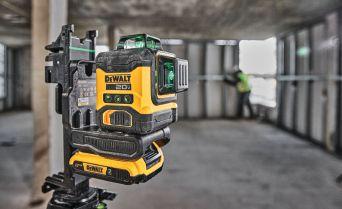
Stainless steel grinder blade Sanibest
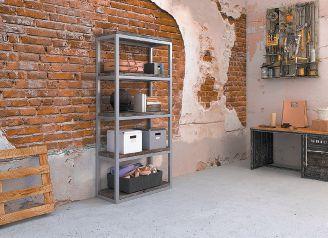


Cost effective solution for above the floor bathroom installations for residential and commercial applications
Access cover for easy access to any major component while installed. Will discharge up to 25 Ft vertically
(Shut-off head: 38 Ft) through a 3/4” or 1” diameter discharge pipe.
Pre-assembled 1 HP unit with two low inlets for the addition of a sink, tub or shower.
